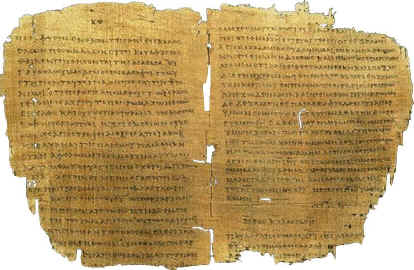Interpretação Teológica das Escrituras e livro Trinity, Revelation, and Reading: A Theological Introduction to the Bible and its Interpretation de Scott R. Swain
 Por incrível que pareça, uma das novidades hermenêuticas de nossa época é chamada Interpretação Teológica das Escrituras. Esse “movimento” é uma reação contra a interpretação histórico-crítica das Escrituras, que, com todos os seus métodos “científicos”, trouxe poucos frutos proveitosos à igreja de Cristo (aqui não estou desprezando o valor da identificação de certas formas literárias, conscientização de aspectos redacionais por parte de diferentes autores bíblicos, entre outras contribuições).
Por incrível que pareça, uma das novidades hermenêuticas de nossa época é chamada Interpretação Teológica das Escrituras. Esse “movimento” é uma reação contra a interpretação histórico-crítica das Escrituras, que, com todos os seus métodos “científicos”, trouxe poucos frutos proveitosos à igreja de Cristo (aqui não estou desprezando o valor da identificação de certas formas literárias, conscientização de aspectos redacionais por parte de diferentes autores bíblicos, entre outras contribuições).
Assim, teólogos sistemáticos e bíblicos passaram a repensar qual é o papel da Bíblia como Escritura. A Interpretação Teológica das Escrituras (Theological Interpretation of Scripture – TIS) é uma reação à afirmação de que a Bíblia deve ser lida como qualquer outro livro. Em suma, para se fazer justiça a Bíblia, deve-se lê-la da de acordo com os termos que ela mesma apresenta, ou seja, sua teologia. Outra maneira de abordar o assunto, é dizer que novamente estamos lidando com o círculo hermenêutico: interpretação > teologia > interpretação. Ou para colocar de forma infantil: quem nasceu primeiro, a interpretação da Bíblia ou a teologia? Veja mais sobre a TIS em http://www.theopedia.com/Theological_interpretation_of_Scripture.
É possível dizer que um dos pais desse “movimento” foi Brevard Childs com sua ênfase na Bíblia como Escritura. Outro defensor de peso é Kevin Vanhoozer. Um crítico do movimento é D. A. Carson que afirma que o movimento traz algumas boas ênfases, que são antigas, e aquilo que tem de novo varia de ambíguo para errado, dependendo do estudioso que a defende (http://www.thegospelcoalition.org/article/carson-tis).
Vanhoozer afirma que a TIS “é caracterizada por um interesse principal em Deus, no munndo e nas obras de Deus, e por uma intenção principal de engajar naquilo que poderíamos chamar de ‘crítica teológica’”. Allison por sua vez, define da seguinte forma: “TIS é uma família de abordagens interpretativas que privilegia leituras teológicas da Bíblia em um devido reconhecimento da natureza teológica das Escrituras, sua mensagem teológica última e/ou interesse teológico de seus leitores”.
Scott Swain, autor do livro do qual extraímos as citações abaixo, é Deão e professor de Teologia Sistemática no Reformed Theological Seminary (Orlando) é um dos importantes promotores desse movimento, sendo inclusive editor de uma série de comentários bíblicos com essa abordagem.
Tenho a impressão de que para vários estudantes de teologia do Brasil, especialmente falando daqueles que estudam ou estudaram em instituições evangélicas conservadoras, várias dessas ideias soarão familiares.
Apresento as citações em inglês pela falta de tempo. Caso não entenda, use o Google Translator (http://translate.google.com.br).
Because biblical interpretation is one dimension of the relationship between God and humanity, sin and redemption, the individual and the church, we cannot properly understand biblical interpretation without considering these topics as well. (p. 2)
Covenant is one of the most important means whereby the triune God communicate his life to us and whereby we hold communion with him. (p. 7)
The central thesis of this book is that we may best appreciate the theological significance of the Bible and biblical interpretation if we understand these two themes in a trinitarian, covenantal context. (p. 7)
In dealing with the Bible interpretively, we are not rational subjects dealing with an inert object; we are instead rational subjects addressed by the divine Subject and called to loving attention and fellowship. (p. 7)
Spiritual reading is an act of “covenant mutuality.” (p. 9)
Biblical interpretation is the work of those who have not yet reached their homeland, not of those who have arrived. As a work of theological pilgrims, therefore, biblical interpretation is a dependent and humble work, pursued not with self-confidence but with confidence in the God who so graciously reveals himself to us in Jesus Christ and who has appointed various means, both personal and corporate, for assisting readers of his Holy Word until we reach the place where reading is replaced by face-to-face communication and communion with the triune God (cf. Rev. 22.1). (p. 9-10)
God’s covenants house a rich variety of words. When speaking to his people, God pronounces judgement and proclaims his name. He makes promises and issues commands. Philosophers of language call these various types of communication “speech acts” for being speaking a speaker not only conveys information, he also performs a host of actions. (P. 41)
The need to put God’s word into writing arises from the unlimited scope of the triune God’s sovereign purpose to manifest his glory through space and time coupled with the mortal limitations of God’s authorized speech agents, his prophets and apostles. (p. 53)
The Bible is “the divinely authorized literary means whereby the living God continually speaks to his people”. (p. 55)
Swain affirms that “Scripture transmits the discourse of the covenant by communicating the discourse of the covenant”. His propose is very specific. He compares the parts of the treaties of the Ancient Near Eastern: name of the king, historical review of its kindness toward the vassals, stipulations, and blessings and curses and affirms that is fits to the general genres we have in Scripture: narrative, legal discourse, prophecy with its oracles of judgement and salvation and the book of revelation containing a final oracle of salvation and judgement. (p. 58-59)
The meaning of a given passage of Scripture becomes clear in the context of the overarching teaching of Scripture as a whole. This is because the Bible is ultimately one book, written by one author (God), concerning one central subject (Christ and covenant), serving one central purpose (the love of God and neighbor). The present point has numerous implications. (p.91)
Because the New Testament proclaims the full flowering of God’s redemptive purpose in Christ, we should not seek a vantage point beyond the New Testament—whether in church tradition, another holy book, or supposed cultural progress—to shed further light upon biblical teaching. (p. 91)
A profitable understanding of scriptural teaching is possible only by the Spirit’s illuminating power. (p. 92)
The Lord gathers, nourishes, defends, and guides his people through this book; and his people assemble around, feed upon, find shelter in, and follow after the words of this book. (p. 95)
The awakening of spiritual organs of perception and taste is essential to a profitable reading of Scripture. (97)
The Spirit who enables and sustains our reading of Holy Scripture also provides a community to aid us in our reading. Renewed reading comes alive and is cultivated in the context of a renewed covenant community, the church. (99-100) By way of summary, then, the church is that community created and authorized by the Word of God in order that it might obediently guard, discern, proclaim, and interpret the Word of God. (102)
Alongside and in service of these avenues for receiving and spreading the Word of God, the Spirit also sets apart certain individuals within the church to serve as publicly authorized ministers of scriptural teaching (102) The teacher in Christ’s church thus exhibits a brotherly exercise of authority when he shows “the reasons and bases of his interpretation so clearly and certainly that also others who themselves do not have the gift of interpretation may be able to understand and grasp them. (104)
Historically, the church has acknowledged two servants as particularly trustworthy aids when it comes to interpreting the Bible: “the rule of faith” and “the rule of love.” (105)
Reading Scripture in light of the rule of faith thus involves reading Scripture from within the context of our trinitarian faith, aided by the church’s good confession, for the sake of the church’s continuing growth in this trinitarian faith. To read Scripture in any other way is to read against the grain of its authority. (113-114)
The rule of love is closely related to the rule of faith. Whereas the latter summarizes the main contours of biblical doctrine (that which is to be believed), the former summarizes the main contours of biblical law (that which is to be done) (114).
Indeed, the failure to orient our interpretive actions and ends to the love of God and neighbor must be regarded as a fundamental failure in biblical interpretation. (117)
We may not therefore assume that we have understood any text of the Bible properly until we have considered how it pertains “to Jesus Christ and his messianic dominion.” 129
As a mode of theological reasoning, biblical interpretation is concerned directly and specifically with the textual mediation of God’s self-revelation in the sacred writings of his authorized emissaries, the prophets and apostles. Whether the object of concern is the sacred writings taken as a whole, as in dogmatics, or with the sacred writings in their distinctive portions and places (cf. Heb. 1.1), as in biblical commentary, the interpreter acknowledges that the Bible affords us with an embarrassment of riches and is therefore devoted to identifying and appreciating each treasure of Holy Scripture in its distinctive beauty and worth, attending to the particular words of particular texts in their particular historical and literary settings in order to provide a faithful representation of their particular message. (137)




Gostei muito deste post, João Paulo! Muito bom lê-lo!
Obrigado, Paul!